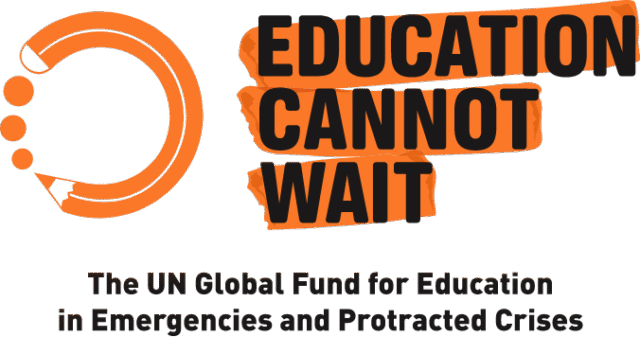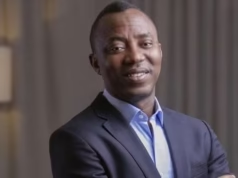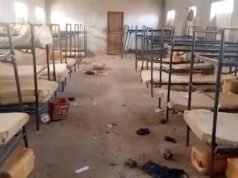In an inspiring milestone, Education Cannot Wait (ECW), the global fund under the United Nations dedicated to education in emergencies and protracted crises, has announced that 14 million children and adolescents have now been reached through its education programmes since its inception. As of mid‐2025, the organisation reports that 8.3 million of them were helped during the first two years (2023–2024) of its current Strategic Plan, spanning 33 crisis‐affected countries.
These millions include girls, boys, refugees, internally displaced children and young people who, until now, have found school access to be uncertain or completely disrupted by conflict, disasters or other emergencies. ECW’s report, Investing in Futures: 2024 Annual Results, comes at a time when global crises—conflict, climate, displacement—are escalating, putting urgent pressure on education systems that are already fragile.
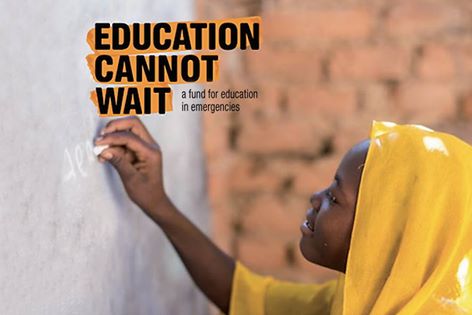
Table of Contents
Equity, Inclusion and Progress: Who’s Being Reached and How
One of the most striking outcomes in ECW’s latest report is the emphasis on who is benefiting and how. Equity and inclusion are not just buzzwords here—they are measurable, documented progress.
- Gender parity: Roughly 51% of the children reached are girls. That’s significant in contexts where girls frequently bear the brunt of disruption to education.
- Displaced children: Around 43% are either refugees or internally displaced persons—young people caught in upheaval and forced to flee, yet still being given opportunities to learn.
- Learning outcomes: In nearly all ECW programmes, education participation has increased; in many, learning outcomes in literacy and numeracy have improved. Social-emotional learning is also being addressed. In programmes where evidence is available, 88% reported gains in literacy/numeracy; 78% showed improvements in social-emotional learning.
- Inclusion of vulnerable groups: More than 155,000 children with disabilities have been reached in 2023–2024. Efforts are also being made to meet the needs of pre-primary aged children (~6%) and secondary school age students (~20%), especially girls in secondary levels.
In addition, ECW is placing increasing emphasis on the intersection of climate change and education. About 41% of the children reached during 2023-2024—approximately 3.4 million girls and boys—were served by programmes that include climate adaptation components.
Funding Shortfalls, Forgotten Crises, and Urgent Needs
Despite the foresight, partnerships, and real progress, ECW warns of a growing gap between what is needed and what is available—financially and institutionally.
- Resource mobilisation: So far, ECW has mobilised US$934 million towards its 2023-2026 Strategic Plan. That’s about two-thirds of its target. Still outstanding are US$567 million necessary to hit the US$1.5 billion goal by end-2026.
- Unpaid pledges: Among pledges already made, some US$113 million remain unpaid, which delays projects and disrupts delivery of education services in crisis zones.
- Funding gap in humanitarian appeals: In 2024, education was severely underfunded. Although it represents just about 5.4% of total global humanitarian requirements, education appeals only received approximately 30% of what was requested.
The report also draws attention to “forgotten crises”—those emergencies that receive relatively little international attention and support despite severe need. Countries such as Bangladesh, Burkina Faso, Cameroon, Democratic Republic of the Congo, Haiti, Lebanon, Mali, Myanmar, Nigeria, and South Sudan are listed. ECW dedicated 39% of its US$202 million disbursements in 2024 to interventions in these underfunded or overlooked settings.
The scale of need is growing. An estimated 234 million children and adolescents affected by crises globally require urgent education support—an increase of 18% compared to three years ago. Without adequate funding and coordinated action, millions more risk being left behind.
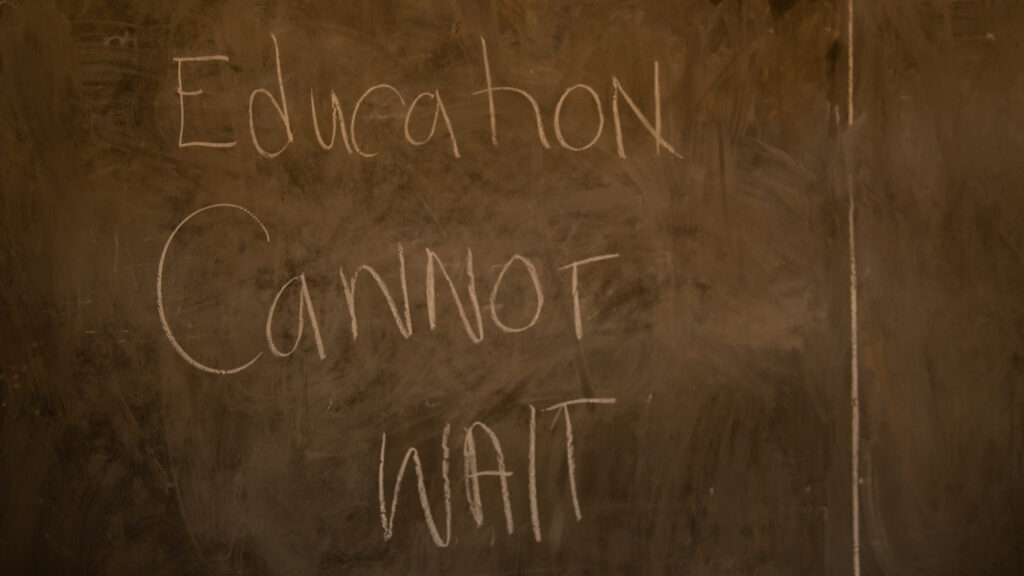
Why This Matters, What Must Be Done
Why should anyone—governments, NGOs, citizens—care about this? Because education is more than a right: it is a lifeline.
- Building resilience: Children who have access to education during crises are more likely to recover faster, adapt better, and contribute to rebuilding their communities. Education promotes stability.
- Protecting futures: When crisis disrupts schooling, especially for girls, risks increase: early marriage, dropping out, exploitation. Ensuring access protects not only education but dignity, opportunity and wellbeing.
- Addressing intersecting crises: Climate change, conflict, displacement—they don’t act in isolation. Education programmes that also build in climate adaptation, conflict sensitivity, inclusion of displaced learners, and disability must be scaled. The 3.4 million children reached in climate-linked programmes in 2023-24 show what is possible.
So, what must be done? ECW’s report outlines steps and asks for urgent action from partners, both public and private:
- Increase funding commitments: To reach the full US$1.5 billion target of the Strategic Plan, new contributions are needed. Donors must convert pledges into actual funding.
- Sustain multi-year programming and rapid response: Programmes that span more than one year allow for greater stability, better systems strengthening, and improved learning outcomes. Rapid response capacity is also crucial for sudden emergencies.
- Strengthen partnerships with local actors and national governments: ECW is pushing for increased national ownership. One recent indicator shows that nearly a third (29%) of funding in 2024-approved programmes is committed or planned for transfer to local and national actors. This ensures interventions are contextually appropriate, sustainable, and scalable.
- Innovate in fragile settings: Innovations in delivering education in conflict zones, climate-affected areas, or among displaced populations are needed. This could include blended learning, mobile schooling, psychosocial support, or modular curricula that can flex with changing realities.
- Focus on inclusion: Girls, displaced children, children with disabilities, and those in secondary education—all remain among the most vulnerable. Dedicated strategies to bring them into schools and keep them there must be reinforced.
ECW in Nigeria: A Closer Look
Although ECW’s report covers 33 countries globally, Nigeria is listed among the forgotten or underfunded crises where progress is urgently needed.
In Nigeria, conflict (in the North-East especially), displacement, and climate shocks (flooding, environmental degradation) have disrupted education for many children. The ECW’s model—combining rapid response and multi-year programming—offers a pathway for more stable, inclusive education. But to fully unlock that potential in Nigeria, the following are especially critical:
- Mobilising more resources: both domestic government funding and international donor support.
- Strengthening local capacities: local NGOs, community actors, teachers and state governments need sustained training, support and empowerment.
- Ensuring flexible, resilient education delivery: schools that can adapt to disruptions, mobile or remote learning where needed, and psychosocial support to address trauma.
- Prioritising girls’ secondary education, children with disabilities, and internally displaced learners to prevent widening inequality.
Looking Ahead: Targets, Risks, and Hope
ECW has set clear targets: with sufficient funding, the plan hopes to reach 20 million crisis-affected children and adolescents by the end of 2026.
But there are real risks: unpaid pledges, persistent underfunding of education in humanitarian appeals, escalating conflict and climate disasters, and systemic barriers to inclusion threaten to derail progress. If these risks are not addressed, millions of children will continue to face interrupted education, loss of opportunity, and long-term disadvantages.
There is reason for hope, however. ECW’s model of shared commitment—governments, UN agencies, civil society, foundations, private sector—shows that real progress is possible even in the hardest settings. For Nigeria and many other countries, this report is a call to action: investments in education in crisis are not charity—they are necessary, urgent, and yield returns for societies, economies, and futures.
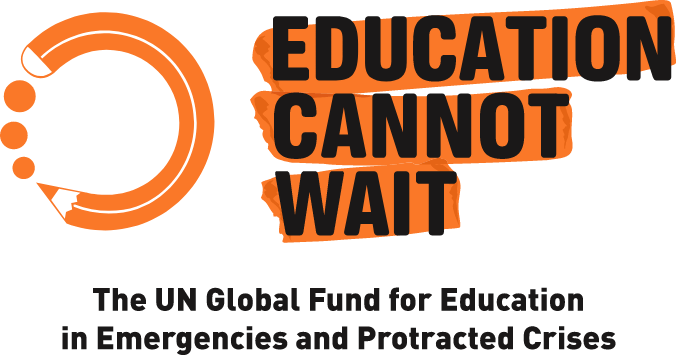
Conclusion: Investing in Futures Is Non-Negotiable
The story of ECW reaching 14 million children in crises is a powerful narrative of what is possible when international will, local commitment, and smart design come together. But it’s also a warning: those gains are fragile and depend on consistent funding, inclusive policies, and adaptive strategies.
For Nigeria, and the world, investing in education amid crises is not optional—it’s essential. To protect futures, to sustain hope, and to build more resilient societies, we must heed the call: increase support, fill funding gaps, empower local actors, and ensure no child is left behind.
Join Our Social Media Channels:
WhatsApp: NaijaEyes
Facebook: NaijaEyes
Twitter: NaijaEyes
Instagram: NaijaEyes
TikTok: NaijaEyes
READ THE LATEST EDUCATION NEWS


